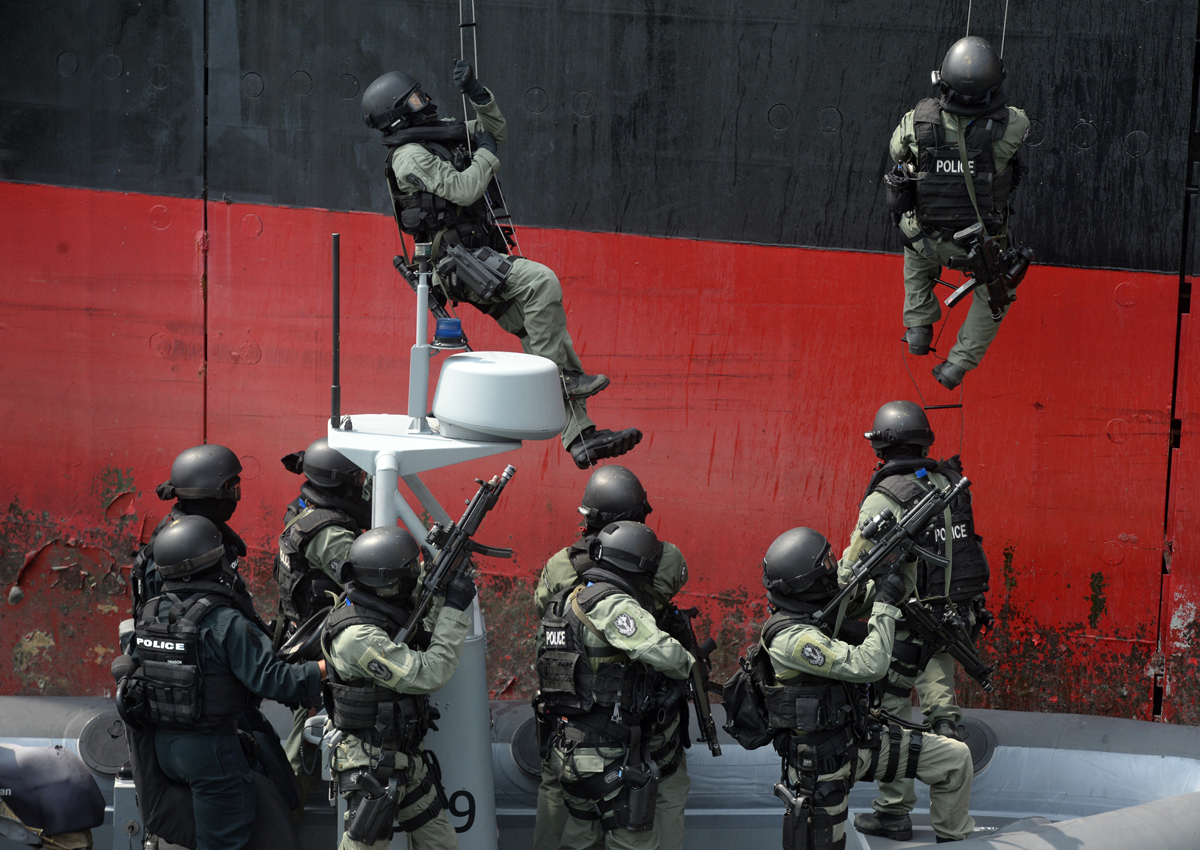A surveillance dragnet of 314 CCTV cameras will be built around Singapore’s shoreline from this year, part of the Police Coast Guard’s (PCG) efforts to boost its detection of intruders.
It will add to its multi-layered defence of the island’s maritime borders, already watched over by advanced electro-optic cameras, radar systems and boat patrols.
“We want to look out at our waters so we can spot enemy vessels early, as this gives us time to respond,” said PCG head of operations and security Ang Eng Seng.
The closed-circuit television (CCTV) cameras will be fully deployed by 2018.
Superintendent Ang said these detection systems would not only pick up smugglers, but also potential terrorist elements, who use the same routes to enter or leave the country.
Just last November, an electro- optic camera detected a man trying to swim away from Singapore. One of 27 wanted Bangladeshi workers who were radicalised, he was nabbed and later deported.
Home Affairs Minister K. Shanmugam said the PCG had a “very important role” in detecting terrorist elements that might try to sneak into Singapore.
“The threats can come from self-radicalised individuals inside… it can also come from a Molenbeek equivalent around Singapore,” said Mr Shanmugam, referring to the district in Brussels, Belgium, where the Paris attacks last year were planned.
Speaking during a visit to the PCG headquarters yesterday, Mr Shanmugam said attackers could try to gain entry to Singapore via the sea, just as the terrorists who carried out the 2008 Mumbai attacks, that left 166 dead, did.
To strengthen Singapore’s maritime borders, the PCG is rolling out more advanced surveillance systems, such as new panoramic electro-optic sensors on the north and south coasts, each with a 360-degree view of its surroundings. The system can even analyse its video footage and flag suspicious activity so officers can act upon it, said the PCG.
Two types of unmanned vehicles are also in the pipeline.
The first, a tethered unmanned aerial vehicle (UAV), is a drone carrying an electro-optic sensor that can be deployed from the decks of coastal patrol craft. Flying at a height of 50m, it gives officers a bird’s eye view of the surrounding waters. It will be put into operation from 2019, said Supt Ang.
The second, an unmanned surface vessel (USV), can patrol an area autonomously, and is equipped with search-lights, loudhailers and other surveillance systems.
Trials will begin late this year. And while it would not be possible to replace manned patrol vessels completely – for instance, USVs would not be able to do boat checks – it could potentially replace some, said Supt Ang.
dansonc@sph.com.sg

This article was first published on March 19, 2016.
Get a copy of The Straits Times or go to straitstimes.com for more stories.






